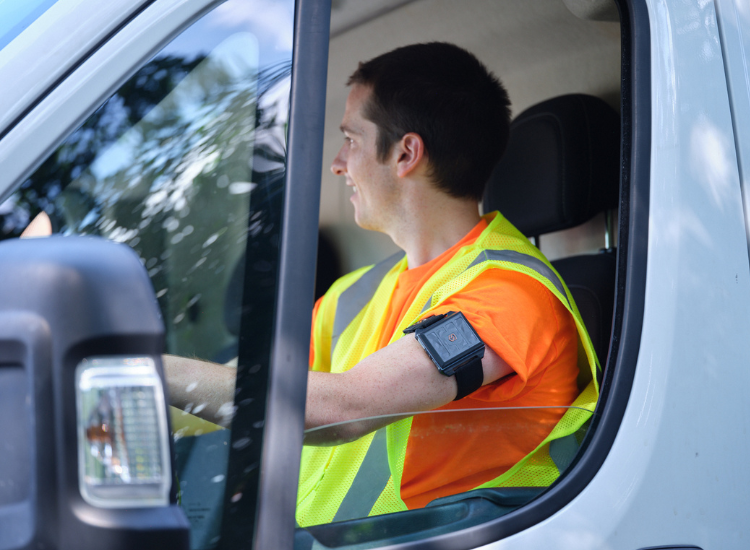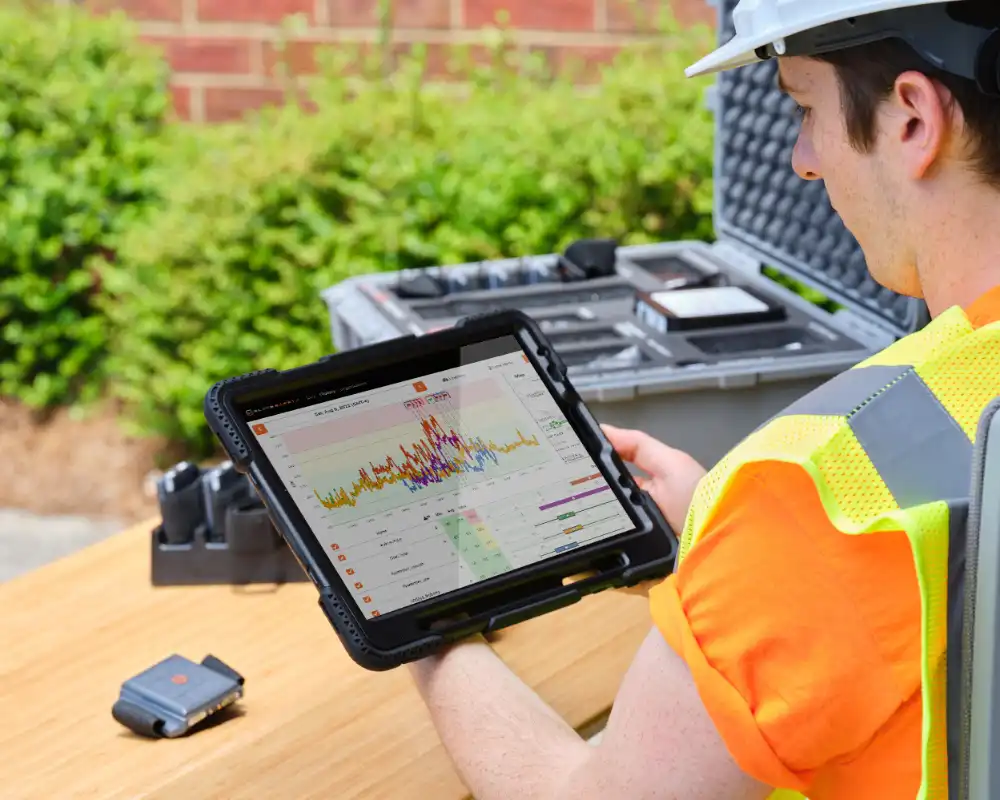In high-heat environments, slow data leads to slow decisions, and that puts workers at serious risk. Heat stress builds quietly. Without real-time updates on workers’ conditions, supervisors are left guessing when to pull crews, rotate shifts, or respond to warning signs. This article breaks down how delayed safety data limits decision-making when it matters most and why real-time monitoring and instant alerts are now essential tools for protecting your workforce.
Why Safety Data Latency Endangers Workers
Heat stress doesn’t strike all at once. It builds gradually as body temperature rises and heart rate climbs. Workers often miss the early warning signs, like dizziness, nausea, or fatigue, which can feel easy to ignore until it’s too late. By the time supervisors spot visible symptoms, serious harm may already be underway.
The problem is clear: many companies rely on manual check-ins and visual observations to monitor worker health. Without real-time data, supervisors are forced to react after a problem appears, instead of stopping it early. This delay puts workers at unnecessary risk every day, in real worksites, to real people.
Real Life Examples
- Construction: A worker pouring concrete on a summer day collapses. No one noticed the early signs of overheating. His heart rate had been spiking for 15 minutes before anyone responded.
- Manufacturing: Inside a hot factory, a line worker struggles to finish a shift. Supervisors rotate crews by the clock, not by the actual needs of the workers. Overexertion goes unnoticed until someone requests medical attention.
- Emergency Services: Firefighters inside a training facility push through intense drills without knowing their bodies are reaching dangerous limits. Without real-time physiological monitoring, instructors have no way to spot rising risks until visible signs of fatigue appear.
What ties these examples together is simple: critical safety data wasn’t available when it was needed most. Spotting these missed warning signs is only the start. To prevent them, safety leaders need to understand exactly where and when these dangerous delays are most likely to happen.
Where and When Safety Data Latency Happens
So, when does safety data fall behind? And where are workers most vulnerable to these critical delays? The answer often lies in the places and systems many companies rely on every day.
Safety data latency usually strikes in three key situations:
- Remote Locations: Think of crews working miles from base camp, pipeline welders in deserts, cleanup teams near chemical spill zones, or utility workers deep in forests. Cellular service fades, WiFi isn’t an option, and satellite connectivity can be unreliable or costly. Without solid network connections, physiological data from workers’ devices fails to reach supervisors fast enough to drive real-time action.
- Manual Monitoring Only: In many worksites, monitoring health still depends on supervisors walking the floor or checking in periodically. This method leaves long gaps between observations. Workers whose conditions change between rounds are left vulnerable. Even diligent supervisors can’t monitor every worker’s condition constantly without help from automated systems.
- Old Tech Systems: Many companies still rely on legacy software that processes data centrally. Here’s the problem: data from wearable devices is transmitted to a distant server, analyzed, and only then reported to supervisors. This adds dangerous minutes of delay. In extreme environments, that delay keeps managers from spotting and stopping overexertion until after harm occurs.
In every case, the outcome is the same: slow data leads to slow intervention, and workers are the ones who suffer. Knowing where these breakdowns occur is a crucial first step, but knowing how safety data should move in real time is what empowers teams to act before it’s too late.
How Safety Data Should Work: From Detection to Action
Imagine a jobsite where safety leaders know something’s wrong the moment a worker’s body does. That’s what effective safety data should deliver. The ideal safety system works without delay. It detects trouble early and delivers that information to the right person instantly.
As a worker’s heart rate or core temperature rises past safe limits, the system reacts immediately. Safety leaders don’t wait for a report. They don’t need a manual check. They’re notified the moment action is required.

This is where physiological monitoring, paired with real-time alerts, transforms how safety teams respond to risk.
- Wearable devices constantly track vital signs, heart rate, core body temperature, exertion level, giving supervisors a live picture of each worker’s condition without interrupting the job.
- Edge-based processing ensures data is analyzed on-site or directly on the device, without relying on slow, centralized servers. Alerts are generated locally, removing the bottleneck of cloud-only processing.
- Instant alerts reach both workers and supervisors the moment safety thresholds are exceeded. Workers are told when to rest. Supervisors know exactly who needs attention and when.
The goal isn’t to overwhelm teams with information. It’s to deliver clear, timely alerts that help supervisors act before injuries occur. With the right system, that level of response becomes possible. The question now is how safety teams can put it into practice.
How to Eliminate Safety Data Latency in Your Workplace

Solving safety data latency doesn’t require reinventing your safety program. With the right tools and a clear plan, safety professionals can take practical steps to close the gap between risk and response. Here’s what to do right now to prevent data delays from putting workers at risk:
- Use wearable monitoring to capture each worker’s real-time health data. Choose devices that measure the metrics that matter most for your jobsite: heart rate, core temperature, and exertion level.
- Adopt systems that send alerts instantly. Prioritize tools that notify both the worker and their supervisor as soon as any critical threshold is crossed. Alerts should be simple, direct, and hard to miss.
- Choose devices with edge-based architecture. This avoids sending all your data to a remote server for analysis. Edge-based processing lets the system analyze worker data on-site, generating faster alerts and cutting out unnecessary delays.
- Customize alert thresholds. Not every job or worker is the same. Your system should allow supervisors to adjust limits based on conditions, task type, or individual needs. This lets you fine-tune interventions to the reality of your worksite, improving both safety and productivity.
By adopting real-time monitoring, your team can move from responding to emergencies to avoiding them entirely. It’s not just about new technology; it’s about giving supervisors the critical information they need to protect workers before small issues become serious problems.
Real-Time Safety Data Matters More Than Ever
When workers overheat, seconds matter. Physiological monitoring and real-time alert systems remove the dangerous gap between problem and response. This isn’t a high-tech luxury, it’s frontline protection for the people doing the toughest jobs.
If your safety data isn’t live, your intervention will always be too late. It’s time to change that.

